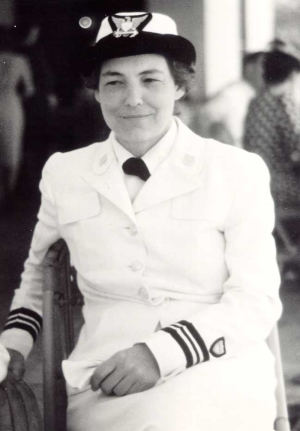
In 1942 Stratton took a leave of absence from Purdue University and was commissioned as a lieutenant in the Women’s Reserve of the U.S. Naval Reserve, which was also known as the WAVES (Women Accepted for Voluntary Emergency Service). She later credited Lillian Moller Gilbreth, professor of engineering at Purdue, for encouraging her to join the military, but she also recalled that she was willing “to do whatever I could to serve my country” and did not need much encouragement. Stratton was among the members of the first class of the U.S. Naval Training Station at Smith College in Northampton, Massachusetts. After completing her initial training, she briefly served as Assistant to the Commanding Officer of the radio school for WAVES at Madison, Wisconsin.
In November 1942, after Franklin D. Roosevelt signed an amendment to Public Law 773 to create a women’s reserve for the U.S. Coast Guard, Stratton became the first woman to be accepted into the new program. She was immediately transferred from the U.S. Navy to the U.S. Coast Guard and was sent to the office of the Commandant of the Coast Guard in Washington, D.C. to organize the Coast Guard Women’s Reserve. Stratton was appointed the first director of the Coast Guard Women’s Reserve, promoted to the rank of lieutenant commander, and became the first woman commissioned an officer in U.S. Coast Guard. She rose through the ranks and in February 1944 promoted to the rank of captain.
Stratton developed Coast Guard Women’s Reserve program and gave it the name of SPAR, an acronym created from the Coast Guard motto, Semper Paratus, and its English translation, Always Ready. As director of the SPARs, a position that Stratton held until 1946, her primary role was to originate policies for SPARs that related to procurement, training, utilization, and maintenance of its members’ morale. She oversaw significant growth in the program. More than 10,000 enlisted women and 1,000 commissioned officers served as SPARs in the remaining years of the war.
Stratton retired from the military in January 1946. By June 30, 1946, the SPARS were demobilized. Stratton remained proud of the fact that the U.S. Coast Guard used the highest percentage of women of any of the military branch of services during the war.
We honor you, Dorothy Stratton.
